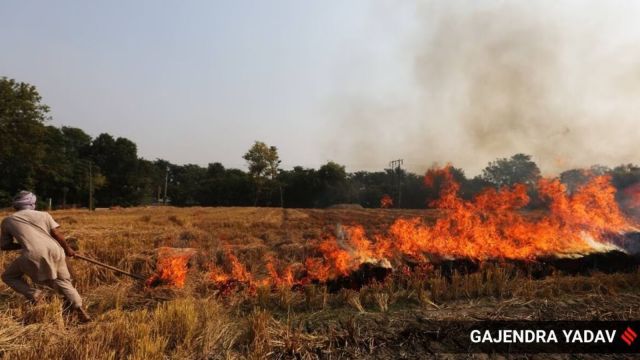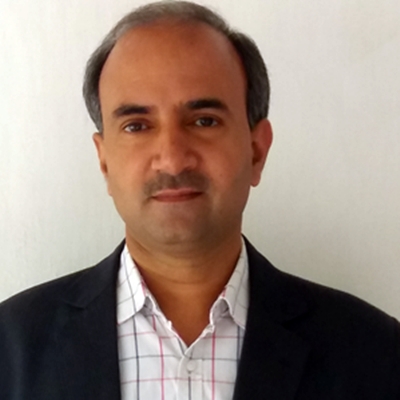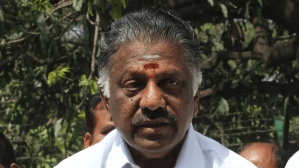As CAQM tells PMO that stubble burning contributes only 1% to Delhi pollution, Haryana IAS officer says farmers can’t be blamed for poor air quality
The Haryana government provides ₹1,000 per acre to farmers for managing paddy crop residue.
 The note cited CAQM Chairman’s reliance on a January 2023 report by The Energy and Resources Institute (TERI), which stated that agricultural residue burning contributed only 1% to PM2.5 and PM10 levels in Delhi. (Express Photo by Gajendra Yadav)
The note cited CAQM Chairman’s reliance on a January 2023 report by The Energy and Resources Institute (TERI), which stated that agricultural residue burning contributed only 1% to PM2.5 and PM10 levels in Delhi. (Express Photo by Gajendra Yadav)In a recent presentation to the Prime Minister’s Office (PMO), the Commission for Air Quality Management (CAQM) stated that stubble burning contributes only 1% to Delhi’s pollution levels. Reacting to this, Haryana additional chief secretary (transport) Ashok Khemka has emphasised that farmers in Punjab and Haryana cannot be held responsible for the deteriorating air quality in the national capital.
In an official note sent to Chief Minister Nayab Singh Saini and Chief Secretary Vivek Joshi on January 10, Khemka referred to a video conference held under the chairmanship of the Prime Minister’s Advisor Tarun Kapoor on January 4.
The note cited CAQM Chairman’s reliance on a January 2023 report by The Energy and Resources Institute (TERI), which stated that agricultural residue burning contributed only 1% to PM2.5 and PM10 levels in Delhi.
Khemka, a 1991 batch IAS officer, noted: “While burning of paddy residue (parali) is harmful to local air quality and must be stopped, farmers in Punjab and Haryana cannot be blamed for the worsening air quality in Delhi.”
Referring to the TERI report, officials highlighted that road and open-area dust significantly contribute to poor air quality. Dust accounts for 38-42% of PM10 in summer and 23-31% in winter, while its contribution to PM2.5 ranges from 31-34% in summer to 15% in winter. Dry conditions and high wind speeds during summer exacerbate the issue.
To address road dust, authorities are focusing on identifying dust hotspots, fully paving roads and roadsides, greening central verges and roadsides, and increasing the use of mechanised road-sweeping machines. Other measures include scientific dust disposal, water sprinkling, use of dust suppressants, and optimised deployment of anti-smog guns.
Agriculture expert Devinder Sharma cited a study by the Indian Institute of Tropical Meteorology (IITM) Pune, which found stubble burning responsible for just 1.3% of Delhi’s pollution, compared to 14.2% caused by vehicular emissions, followed by construction activities and dust.
Despite a significant reduction in stubble burning, Delhi’s annual PM2.5 levels rose in 2024 for the second consecutive year. According to a recent Centre for Science and Environment (CSE) report, Delhi’s annual PM2.5 levels increased by 3.4% to 104.7 micrograms per cubic metre, more than double the permissible national annual standard of 40 µg/m3. This rise occurred despite a 71.2% drop in stubble fire incidents in Punjab, Haryana, and Delhi during October-December 2024.
Haryana Agriculture and Farmers’ Welfare Minister Shyam Singh Rana said the government plans to increase incentives for farmers who refrain from stubble burning. Currently, the state provides ₹1,000 per acre for managing paddy crop residue. Officials credit this initiative for reducing stubble burning incidents by 47% compared to 2023.













